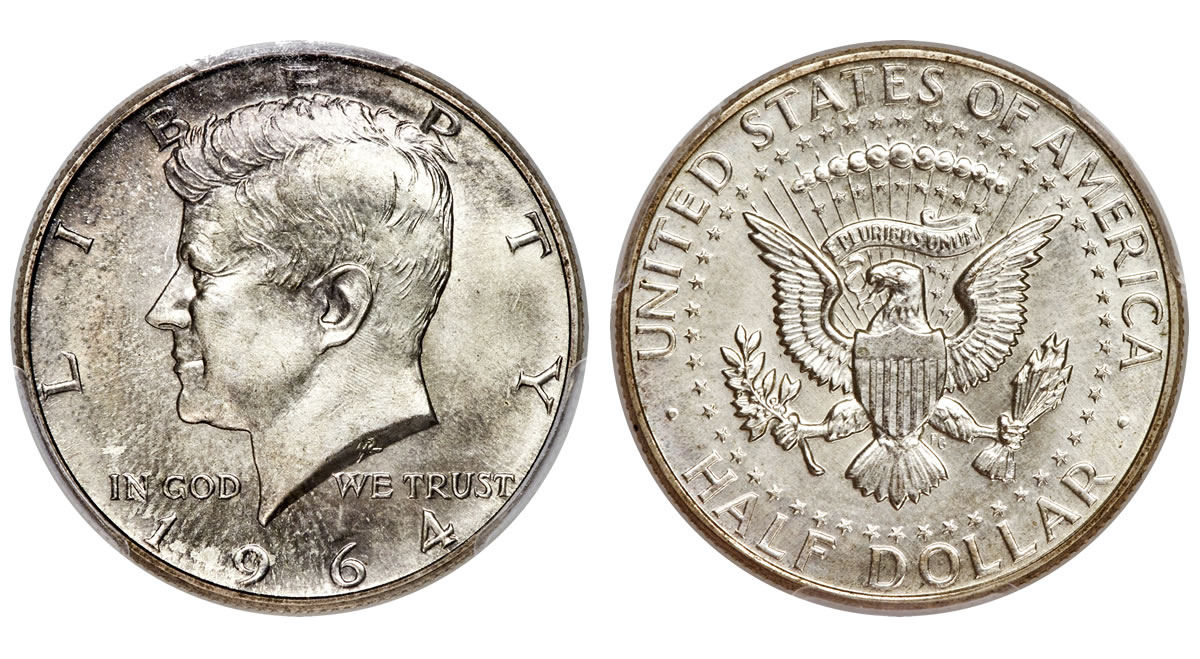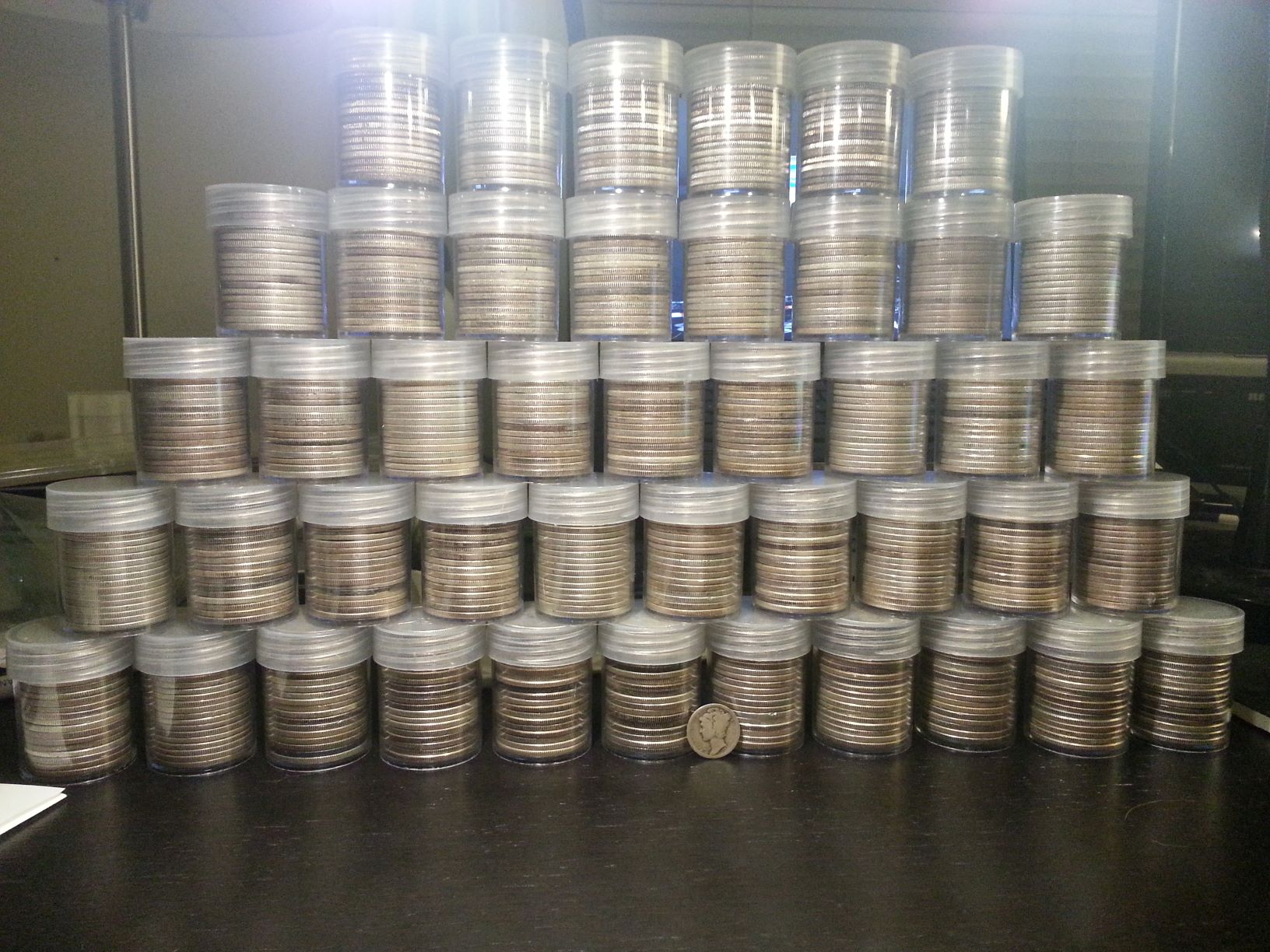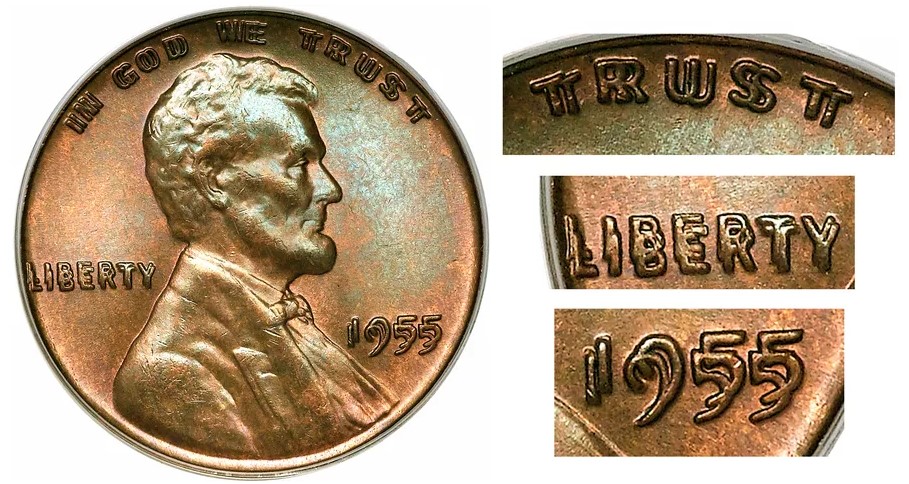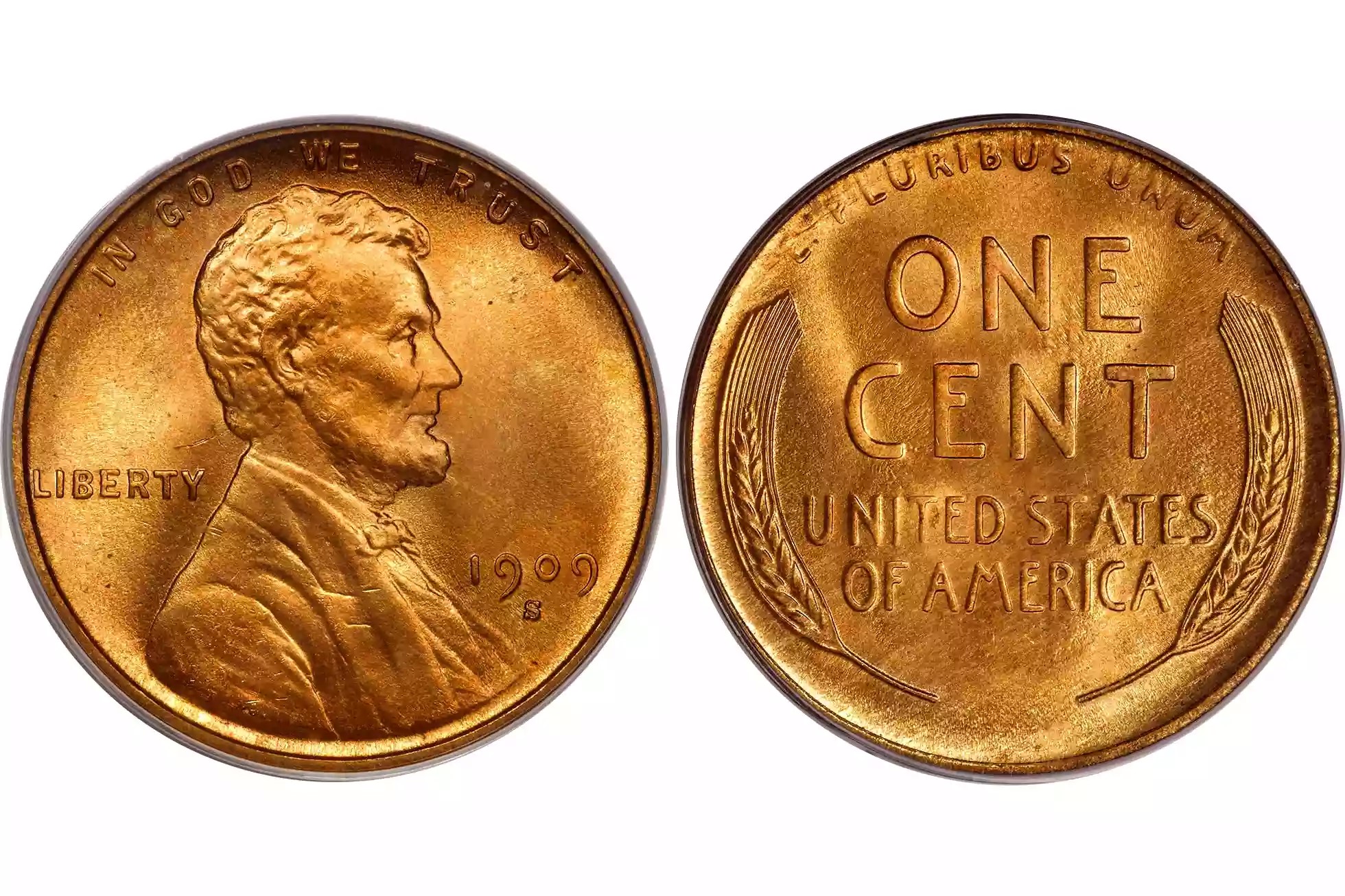Most people use banks as a place to either borrow money or store it.
But some lucky coin enthusiasts have found a unique way to get money out of the bank: bringing home rolls of coins and searching through them for ones worth more than their face value. The hobby, called “coin roll hunting,” has thousands of adherents — and it can pay off spectacularly.
A Texas woman named Megan Green was introduced to the hobby after coming across a YouTube video about a 1970 Washington quarter that was selling for $35,000. Due to a major mint error, the quarter was struck over a 1941 Canadian quarter instead of a blank one.
“I was dumbfounded as to how someone would pay that much for a quarter,” she told Coin World, a popular news and analysis website for collectors, last year.
“A thought then came to my mind about trying out this new hobby,” she said. “If it was something I could enjoy doing, while also helping my family financially, it’d be a win-win-situation.”
In 2017, Green went to a local bank and acquired a $25 face-value box containing 50 rolls of pennies and started coin roll hunting. She followed that with a single box in each of the next few weeks.
After months of disappointment, Green found what many collectors consider the Holy Grail of valuable pennies: a 1969-S Doubled Die Obverse (the “S” means it was made at the San Francisco Mint).
Among many coin enthusiasts, the 1969-S Lincoln cent is the canvas for one of the most popular and rarest doubled die varieties ever produced. Doubled dies occur from mistakes in the manufacturing process, in which the hub imprints an additional image onto a die — or stamp — causing some misalignment.
(Pictured above: a 1969-S Doubled Die Obverse” | Photo: Heritage Auctions, HA.com)
The value of any given variety or error is subject to its rarity, condition and demand. The Professional Coin Grading Service authenticated Green’s coin and assigned it a value of $24,000.
But one in good condition could go for $75,000 or more, James Bucki, a coin expert at The Spruce Crafts, told CNBC Make It.
In 2008, for example, an “attractively preserved” 1969-S Doubled Die Obverse — also discovered through coin roll hunting — was sold for $126,500, Heritage Auctions, the world’s largest auctioneer of coins, confirmed in a press release.
“The strike is crisp, and the peripheral elements show the variant’s characteristic doubling, with the effect most prominent in the word ‘LIBERTY’ and the date,” according to Heritage, who hosted the auction.
Like most treasure-seeking hobbies, coin roll hunting can be frustrating, and many people end up facing a low rate of return.
“But it’s not just about the potential financial reward. It’s the thrill of the hunt and the joy of discovery,” Donn Pearlman, a long-time collector and spokesperson for the Professional Numismatists Guild, a non-profit organization for rare coins and paper money experts, told CNBC Make It.
The best part? Coin roll hunting is free, requiring mostly the time and effort of picking up rolls from the bank and searching through them.
If you’re serious about getting into the hobby, have a magnifying glass ready and dedicate some time to learning about notable mint errors and rare varieties in coins, suggests John Sculley, a coin cataloger for Heritage.
“There are numerous reference books and online resources for this. Updated versions of ‘The Official Red Book: A Guide Book of United States Coin,’ for example, come out every year — and they’re a ‘must-have’ for roll hunters,” he said.
Here are some expert tips for those who want to get started:
1. Search for silver
Prior to 1965, dimes, quarters, half dollars and dollars were all made mostly from silver.
“A silver coin always has value in excess of its denomination, whereas with error finds or die variety discoveries, there is always the question of, ‘Is it worth anything?’ Silver always brings a premium,” said Sculley.
And unlike other coins, which require observation under a magnifying glass, it’s easy to know if you’ve found a silver one. “A quick glance at the date, or at the edge of the coin, will determine if it has a clad copper layer,” he explained. “If it does, the coin is not silver.”
2. Search through half dollars
Pennies and nickels may be more fun to search through because “you’re likely to find something good in every box,” Larry, a former coin roll hunter who requested not to share his last name, told CNBC Make It.
If you’re looking for a higher profit, however, he says to “go with halves.” Depending on what the current silver prices are — just under $18 today — a pre-1965 half dollar (90% silver) is worth about $6, and a half dollar dated anywhere between 1965 and 1970 (40% silver) is worth about $2.50, according to Rich Weaver, president of the Professional Numismatists Guild.
Some older and rarer half dollars that collectors value could be worth much more. In April, a 1964 Kennedy Half Dollar sold for a record-setting $108,000.
“The rare example of this rather common piece of pocket change is one of about a dozen special issues struck in 90% silver and 10% copper for special coin sets issued by the U.S. Mint during the mid-1960s,” according to Heritage. Previously, other 1964 Kennedy Half Dollars have been auctioned off at prices ranging between $17,000 and $45,000.

(Pictured above: a 1964 Kennedy Half Dollar, sold for $108,000 | Photo: Heritage Auctions, HA.com)
Larry said he made an average of $15,000 per year by coin roll hunting, mostly searching through half dollars.

(Pictured above: a stack of 90% silver half dollars | Photo: Larry, coin roll hunter)
On average, he spent 15 hours a week searching through rolls and rolls of coins that he got from his local bank.
3. Look for anomalies
Looking for unusual traits is the strategy Green used when she found her 1969-S Doubled Die Obverse penny.
It’s also the approach Weaver recommends. Pennies are often the best bet because they’re printed in large quantities and are more prone to errors, he said. They’re also the least expensive coin rolls to obtain: You can have 1,000 of them and only tie up $10.
A coin that’s out of the ordinary in any way is likely to be worth more than face value. The most valuable variations are doubled dies.

(Pictured above: 1955 Doubled Die Lincoln Wheat Penny | Photo: James Bucki)
Letters that are oddly close together or oddly far apart are also noteworthy. A great example of this is the 1992 Close AM Reverse, in which the right foot of the ‘A’ and left foot of the ‘M’ in ‘AMERICA’ touch. Most pennies minted that year have very definite spaces between those two letters.
(Pictured above: 1992 Close AM Reverse | Photo: Heritage Auctions, HA.com)
Bucki, of The Spruce Crafts, estimates that a 1992 Close AM coin in fairly new condition could be worth about $20,000, while one in lesser condition could sell for anywhere between $2,000 and $3,000.
Also, any older penny with a picture of wheat stalks, rather than the Lincoln Memorial, is worth at least 5 cents to dealers.

(Pictured above: 1909-S Wheat Penny | Photo: Heritage Auctions, HA.com)
“The Wheat cent has a number of rare ‘key’ dates and varieties that can be worth anywhere from $50 to over $1,000. Almost everybody has had one in their change and thrown it to the side,” one coin expert wrote in a Heritage blog post.
4. Start at home
Unless you’re seeking high-grade coins from the last year or two, the best place to start is with any old jar of change you may have sitting around or that you found while cleaning out your grandparents’ home.
Whatever you do, don’t cash these in for face value until you’ve checked for any special items, Weaver said. Coins you find this way are likely to be older and not previously searched through by others.
That means your chances of finding something good are much higher than with coins you get from the bank.
5. Be nice to bank tellers
Depending on where you go, some banks are generally happy to order boxes of coins on request — though not all are required to.
Larry recommends getting to know your bank’s tellers and bringing them the occasional box of donuts or a pizza if you make a particularly big score. “Remember, you’re creating more work for these individuals, and if they want to cut you off, they can cut you off,” he warned.
Some banks won’t want to supply coin rolls, he added, in which case you’re better off seeking a different bank rather than trying to talk them into it.
6. Search through newer coins and strive for perfection
This somewhat controversial approach is recommended by Scott Travers, author of “The Coin Collector’s Survival Manual” and executive editor of COINage Magazine, a leading name in numismatic publications.
Rather than looking for silver coins or errors such as a doubled die, he suggests asking the bank for uncirculated mint-state coins from more recent years, or even the current year.
Then, look through the rolls and find the most perfect examples of the coin that you can. Back up your naked-eye observation by putting the coin under a five-power magnifying glass and see if you can spot any blemishes or scratches.
If you can’t, consider having the coin professionally evaluated; it may be assigned a rating between one and 70 depending on its condition. “Most brand-new coins are going to be 63, 64, 65, or occasionally 66,” Travers told CNBC Make It.
But if you can find one that earns a grade of 67 or 68, it could be very valuable indeed. “A 68-graded 2017-D cent [with the Denver mint mark] is valued at about $1,300,” he said.
7. Look it up first
The easiest way to tell if you have a potentially valuable coin is to first look it up on reputable websites such as the Numismatists Guaranty Corporation or Professional Coin Grading Service.
If you think you’ve found something special, the next step would be to consult an expert. The process isn’t as difficult as most people think — and it doesn’t have to cost anything, said Sculley.
He recommends taking the time to get to know your local coin dealer. Owners of small shops are often very knowledgeable and enjoy conversing with collectors about coins of all sorts.
“They’re usually happy to help you evaluate your discoveries and can offer invaluable insight into what causes the errors and varieties you’re finding — essentially mentoring you as you grow into the hobby,” he said.
8. Be patient and keep hunting
The odds of finding a valuable coin in any given roll are low. So the best way to improve your odds is by searching through lots and lots of rolls.
Based on his experience, Larry said new hunters should “expect long streaks where they find little to nothing in the way of silver, better dates, or errors.”
But then, he continued, you might search through a box of half-dollar roll and find a couple of rolls that are all or mostly silver. Those rolls “make coin roll hunting worth the time and effort.”
Minda Zetlin is a freelance writer covering business, money, tech and collectibles. She is also the co-author of “The Geek Gap” and former vice president of the American Society of Journalists and Authors.
Don’t miss:
Like this story? Subscribe to CNBC Make It on YouTube!
 EU News Digest Latest News & Updates
EU News Digest Latest News & Updates



